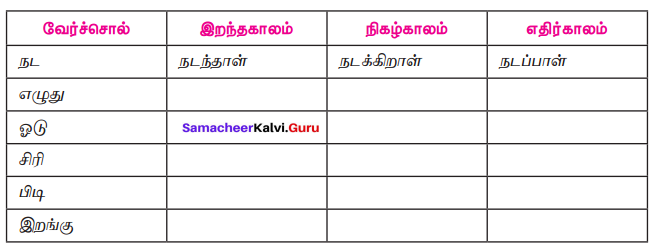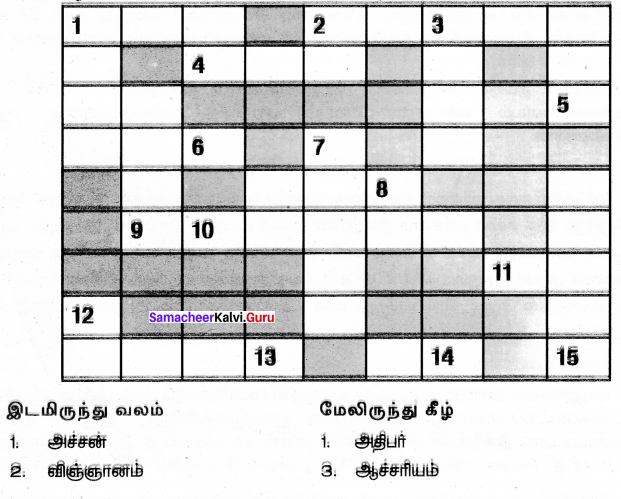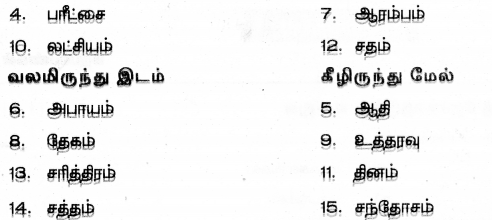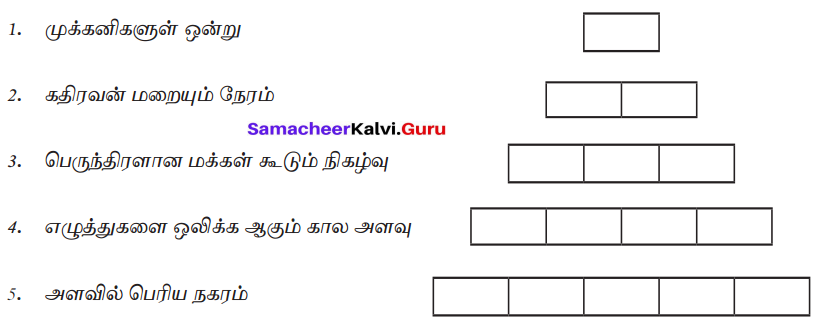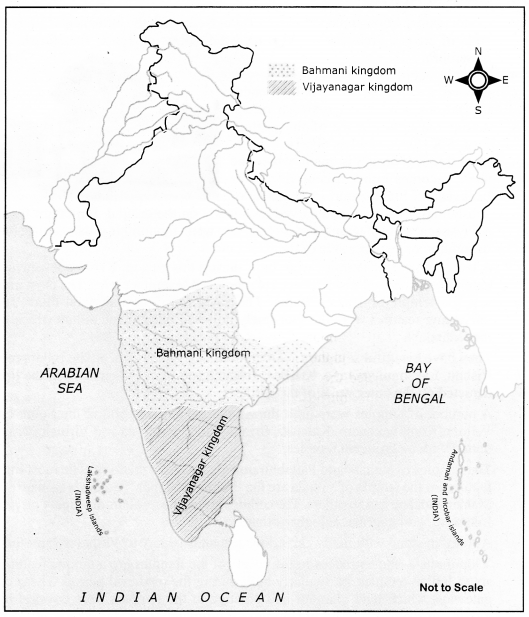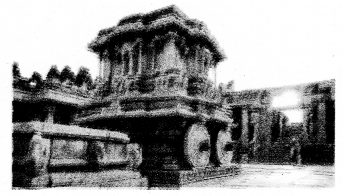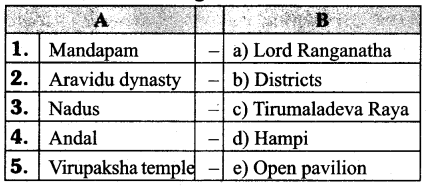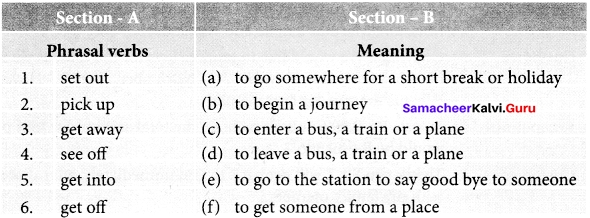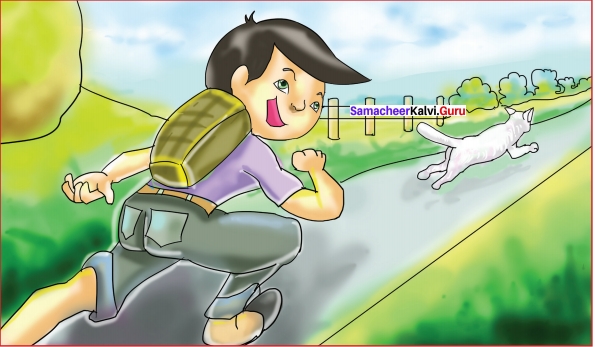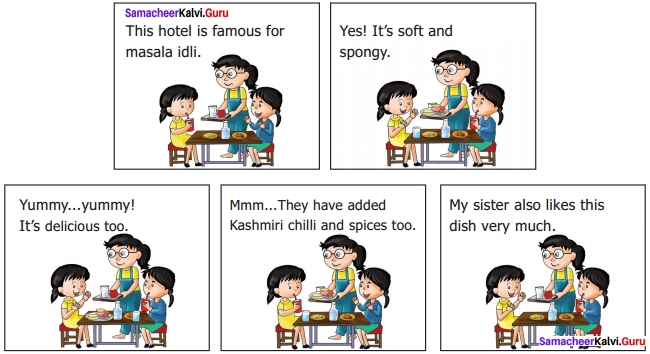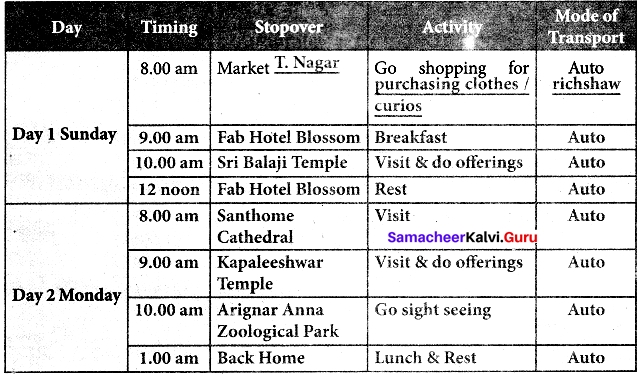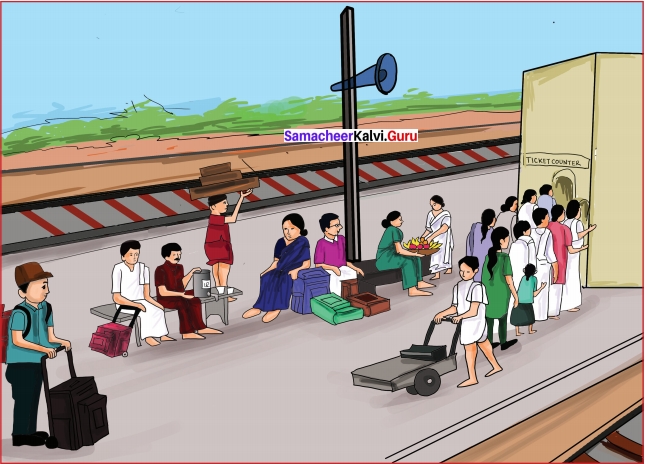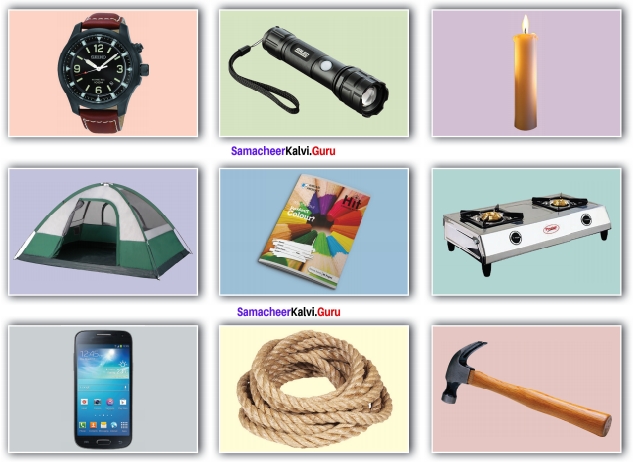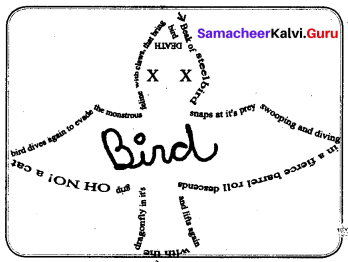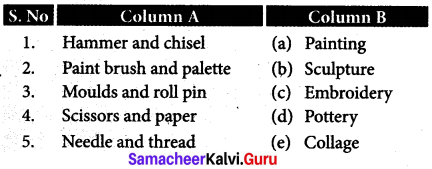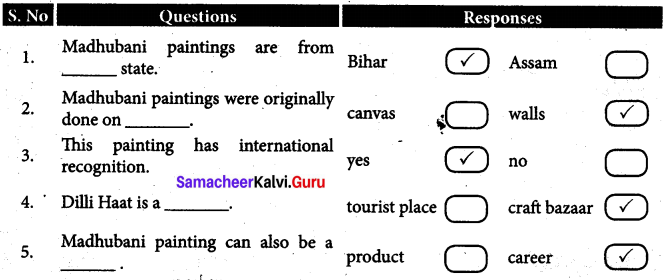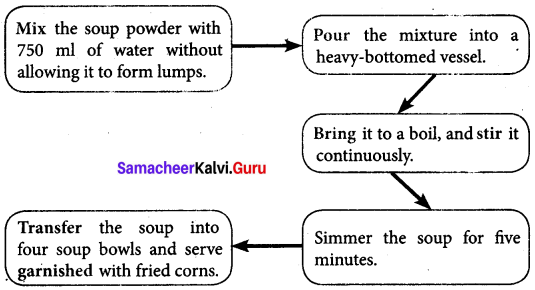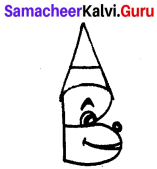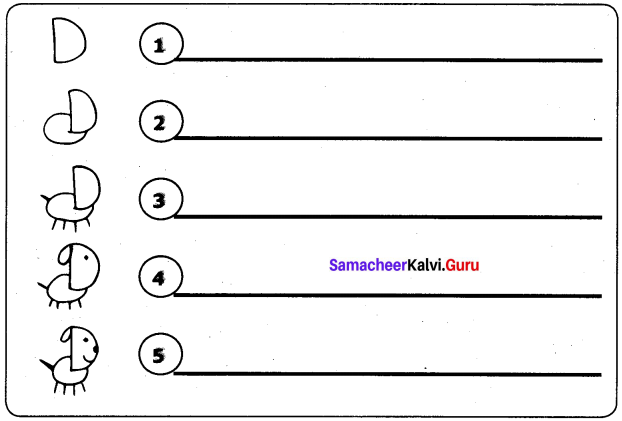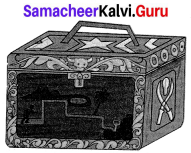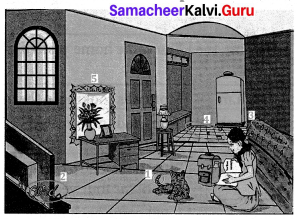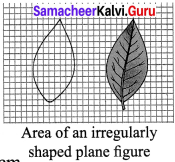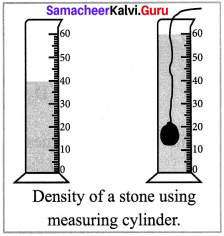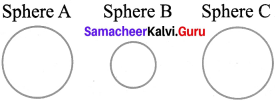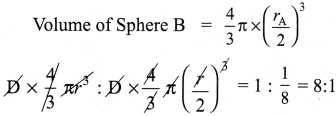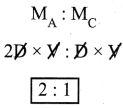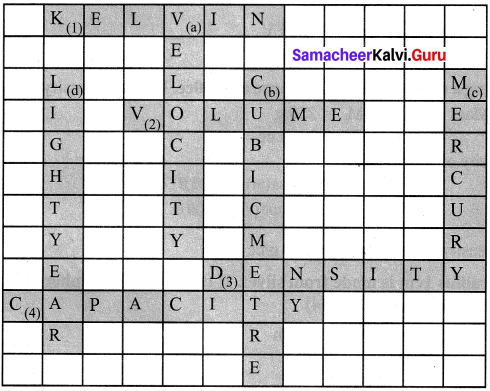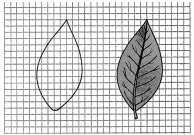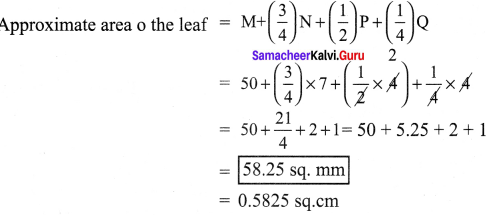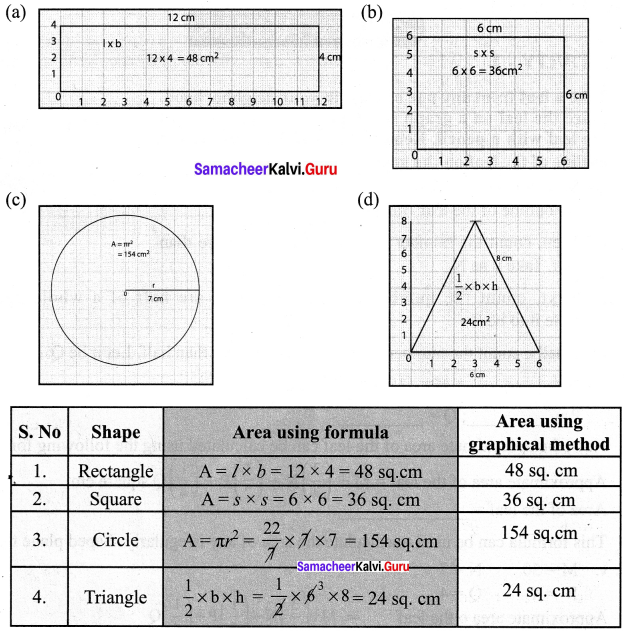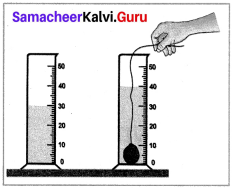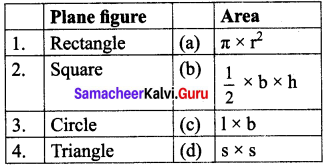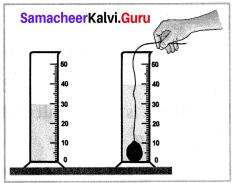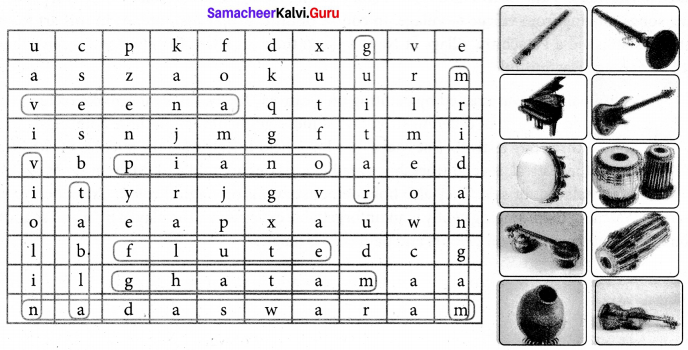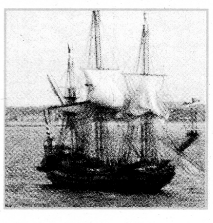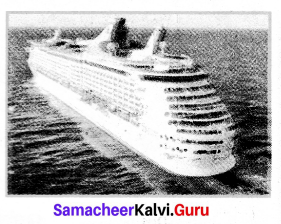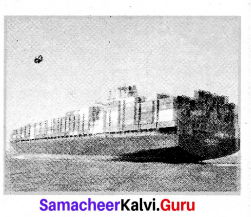Students can Download English Lesson 1 On Monday Morning Questions and Answers, Summary, Notes Pdf, Activity, Samacheer Kalvi 7th English Book Solutions Guide Pdf helps you to revise the complete Tamilnadu State Board New Syllabus and score more marks in your examinations.
Tamilnadu Samacheer Kalvi 7th English Solutions Term 1 Supplementary Chapter 1 On Monday Morning
A. Name the speaker.
Answer:
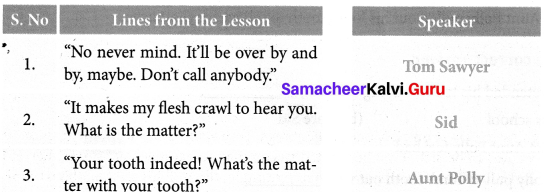
B. Write True or False against each statement.
- Tom enjoyed Monday mornings as he had to go to school.
- Toms first groan woke up Sid from his sound sleep.
- Tom wanted to give his dog with one eye to the new girl who had come to town.
- Aunt Polly sent Sid to fetch the dentist.
Answer:
- False
- False
- False
- False
C. Read the following passage and answer the questions.
Tom lay thinking. Presently it occurred to him that he wished he was sick; then he could stay home from school. He examined himself. He found no symptoms or sickness, and he investigated again. This time he felt he had a stomach ache, but it soon grew feeble, and presently died wholly away. He reflected further.
Question with Answers:
On Monday Morning Question 1.
Why did Tom wish that he were sick?
Answer:
Tom wished he was sick so that he could stay home from school.
Monday Morning Questions And Answers Question 2.
What was the result of Tom’s self-examination?
Answer:
Tom found no symptoms of sickness after he self-examined himself.
On Monday Morning Supplementary Summary Question 3.
What did he detect?
Answer:
Tom detected that he had a stomach ache.
D. Think and answer.
On Monday Morning Questions And Answers Question 1.
How did Sid show his affection towards Tom?
Answer:
Tom’s groans made Sid’s flesh to crawl. When he thought that Tom was dying, and flew to call Aunt Polly quickly.
On Monday Morning Supplementary Questions And Answers Question 2.
Did Aunt Polly believe Tom’s groaning? Why?
Answer:
No, Aunt Polly did not believe Tom’s groaning because his toe was not sore and he was not in a dying state.
On Monday Morning Question Answer Question 3.
What did Aunt Polly do to relieve Tom’s toothache?
Answer:
Aunt Polly pulled out his loose tooth to relieve his toothache.
E. Choose the correct answer.
On Monday Morning Book Back Answers Question 1.
Tom pretended his toe was dying in order to __________
(a) miss school
(b) scare Sid
(c) make Aunt Polly feel bad
Answer:
(a) miss school
On Monday Morning Supplementary Question 2.
Aunt Polly pulled Tom’s tooth out with __________
(a) her fingers
(b) a pair of pliers
(c) a piece of thread
Answer:
(c) a piece of thread
Monday Morning Questions And Answers Pdf Question 3.
Tom was miserable on Monday morning because __________
(a) he was sick
(b) he hated going to school
(c) Aunt Polly was sick
Answer:
(b) he hated going to school
Project
F. Give instructions to your friend to reach your house from school. Mention some landmarks that your friend should lookout for on his way. Draw a road map with landmarks based on the instructions given to your friend.
Answer:
Dear Kiran, Come to my home today after school.
As you step out of the school, turn right and walk till you reach the signal. Cross the road and walk further passing the Reliance Super Market in the corner. Turn the second right next to the Post office. The third house on the left, beside the park with door number 16 is my house.
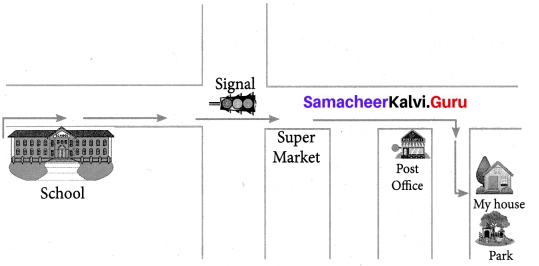
Connecting To Self
G. Draw a family tree showing the members of your family and write a sentence about the activities that your whole family does together. How does it help others in a family and what do you learn from this?
Answer:
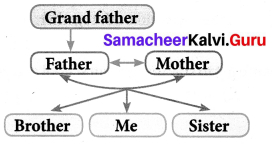
Step To Success
H. Give a relationship term for the clues given
Answer:
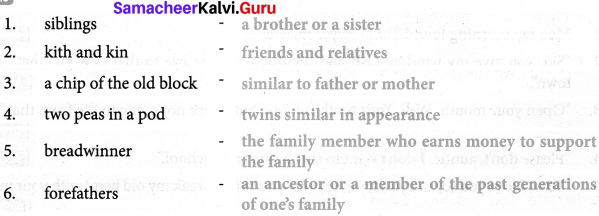
I. Arrange the words according to their degrees of meaning
- eager, thrilled, excited
- old, aged, senior
- small, tiny, minute
- worried, panicked, anxious
Answer:
- excited, thrilled, eager
- fruifar senior, old, aged
- small, tiny, minute
- anxious, worried, panicked
J. Think and Answer
Monday Morning Summary Question 1.
X and Y are parents to Z. But Z is not the son of X.
Then what is Z to X?
Answer:
Daughter
On Monday Morning Supplementary In Tamil Question 2.
Meera’s brother is the father of Aakash.
Then how is Aakash related to Meera?
Answer:
Aunt
On Monday Morning Additional Questions
I. Choose the Correct Answers (MCQ)
On Monday Morning 7th Standard Question 1.
It occurred to Tom that he was ______; then he could stay home from school
(a) sick
(b) dead
(c) happy
Answer:
(a) sick
Monday Morning Lesson Summary Question 2.
Tom groaned louder, and fancied that he began to feel pain in the ______
(a) tooth
(b) stomach
(c) toe
Answer:
(c) toe
7th Standard English On Monday Morning Question 3.
“Why, what’s the matter, Tom? I must call ______
(a) Mary
(b) auntie
(c) Sid
Answer:
(b) auntie
Question 4.
The old lady laughed a little, then ______ a little, then did both together.
(a) screamed
(b) cried
(c) clapped
Answer:
(b) cried
Question 5.
So all this row was because you thought you’d get to stay home from school and go ______ ?”
(a) fishing
(b) shopping
(c) playing
Answer:
(a) fishing
II. Identify the Character / Speaker.
- “Tom, why didn’t you wake me sooner?”
- “Tom, what a turn you did give me”.
- “I forgive you for everything, Sid”.
- “Mary get me a silk thread, and a chunk of fire out of the kitchen”.
- “Oh, auntie, my sore toe’s dying!”
Answer:
- Tom’s brother Sid
- Aunt polly
- Tom
- Aunt pollyTom
- Tom
III. Write True or False against each statement.
- Monday morning found Tom Sawyer miserable.
- “Sid, you give my window-sash and my dog with one eye to that new girl that’s come to town”.
- “Open your mouth. Well. Your tooth is loose, but your’e not going to die from that.”
- “Please don’t, auntie. I don’t want to stay home from school.”
- “Tom, I love you so, and you try every way you can to break my old hand with your mischief?’
Answer:
- True
- False
- True
- True
- False
IV. Very Short Questions with Answers.
Question 1.
What did Tom compared his school to?
Answer:
Tom compared his school to a prison.
Question 2.
Was Tom really sick?
Answer:
No, Tom was not actually sick
Question 3.
What did Sid tell Aunt about Tom?
Answer:
Sid told aunt that Tom was dying.
Question 4.
With whom did Aunt go upstairs to see Tom?
Answer:
Aunt went upstairs with Sid and Mary.
Question 5.
What were the dental instruments?
Answer:
A silk thread and a chunk of fire were the dental instruments.
Question 6.
What did Tom want to do by staying home from school?
Answer:
Tom wanted to stay home from school and go for fishing
V. Short Questions with Answers.
Question 1.
What were the three sickness Tom had planned to suffer from?
Answer:
Tom planned to suffer from stomach ache, sore toe and toothache.
Question 2.
How did Tom try to wake up Sid?
Answer:
Tom made successive loud groans, panted with exertions and snored. When this did not wake up Sid, he called Sid and shook him.
Question 3.
Why did Aunt Polly cried and laughed together?
Answer:
Aunt Polly cried with relief that nothing was wrong with Tom. She laughed thinking of the prank played by Tom once again.
VI. Paragraph Questions with Answers.
Question 1.
How did Aunt Polly extract Tom’s tooth?
Answer:
Aunt Polly fastened one end of the silk thread to Tom’s tooth with a loop and tied the other to the bedpost. Then she caught hold of the chunk of fire and suddenly pushed it almost into Tom’s face. The tooth now was hanging loosely by the bedpost.
Question 2.
Did Sid believe that Tom was sick? Justify.
Answer:
Yes, Sid believed that Tom was very sick. Anxious Sid, called Tom and shook him. He felt bad for not helping Tom who was suffering for hours. He assured Tom that he would not die and rushed to call Aunt Polly to save Tom from dying.
VII. Rearrange the Jumbled Sentences.
1.“What is the matter with you child?”.
2.Tom groaned and fancied to feel pain in the toe.
3.“You seem to try every way you can to break my old heart with your mischief’
4.The tooth was hanging loosely by the bedpost.
5.He wished he was sick to stay home from school.
6.Monday morning found Tom Sawyer miserable.
7.”Tom you aren’t dying, are you?”
8.“Oh, Aunt Polly, come! Tom’s dying!”
9.“One of them is loose, and it aches perfectly awful”
10.“I don’t want to stay home from school.”
Answer:
6.Monday morning found Tom Sawyer miserable.
5.He wished he was sick to stay home from school.
2.Tom groaned and fancied to feel pain in the toe.
7.”Tom you aren’t dying, are you?”
8.“Oh, Aunt Polly, come! Tom’s dying!”
1.“What is the matter with you child?”
9.“One of them is loose, and it aches perfectly awful”.
10.“I don’t want to stay home from school.”
3.“You seem to try every way you can to break my old heart with your mischief.”
4.The tooth was hanging loosely by the bedpost.
VIII. Read the passage and answer the questions.
A.
Monday morning found Tom Sawyer miserable. Monday morning always found him so because it began another week’s slow suffering in school. He generally began that day with wishing he had had no holiday in between, he made the going into prison again so much worse.
Question 1.
Why were Monday mornings miserable for Tom?
Answer:
Tom hated to go to school on Monday mornings. So he felt miserable.
Question 2.
How was Tom’s experience about going to school all the week?
Answer:
It was a week long slow suffering in school for Tom.
Question 3.
What was going to school compared to by Tom?
Answer:
Going to school was compared to going into a prison by Tom.
B.
The old lady made one end of the silk thread fast to Tom’s tooth with a loop and tied the other to the bedpost. Then she caught hold of the chunk of fire and suddenly pushed it almost into the boy’s face. The tooth was hanging loosely by the bedpost, now.
1 .The old lady tied one end of the silk thread to Tom’s tooth. Where did she tie the other?
Answer:
She tied the other end to the bedpost.
Question 2.
Did the old lady push the chunk of fire into Tom’s face?
Answer:
No. The old lady almost seem to do it but she did not actually push it.
Question 3.
How was the tooth pulled out?
Answer:
When the old lady went towards Tom with the hot chunk of fire, he feared it would hurt his face and tried to move away. When he moved, his tooth tied to the thread got pulled.
C.
“Tom, why didn’t you wake me sooner? Oh, Tom, DON’T! It makes my flesh crawl to hear you. What is the matter?”
“I forgive you for everything, Sid. (Groan.) Everything you’ve ever done to me. When I’m gone »
“Oh, Tom, you aren’t dying, are you?
Question 1.
Why did Sid feel that Tom should have woken him sooner?
Answer:
Sid felt that if Tom had woken him up earlier, he could had prevented Tom’s condition becoming bad.
Question 2.
Why did Tom ask forgiveness to Sid for everything he had done to him?
Answer:
Tom pretended to ask forgiveness as his death bed confession.
Question 3.
“When I’m gone”. What does Tom mean by these words?
Answer:
Tom’s words mean that he would be dead soon.
On Monday Morning Summary
Tom felt like going to prison on all Monday mornings. Tom wanted to stay home from school so he lay in bed and wished to be sick. First he wanted to complain of stomach ache and later of loose tooth, but he changed his mind as he was afraid that his aunt would pull his teeth and hurt him.
Tom had earlier known that an injured toe can keep one in bed for even three weeks. So he lifted his sore toe up and started to groan loudly in imaginary pain, to wake up Sid sleeping beside him. Finally Sid woke thinking Tom was really suffering for hours. Sid was upset with Toms condition, who started to confess his sins as if he was about to die.
Sid flew down to call Aunt Polly quickly to save Tom. Aunt Polly hurried upstairs trembling. Soon she understood Tom was pretending of‘dying sore toe’. So Tom now told it was awful aching of loose tooth.
When Aunt Polly got ready to pull his tooth with a silk thread and a chunk of fire, Tom panicked and confessed that it doesn’t hurt him anymore and he would go to school and not for fishing.
Old Aunt Polly loved mischievous Tom though he tries to break her heart often. She pulled his tooth in a crude way and relieved his toothache.
